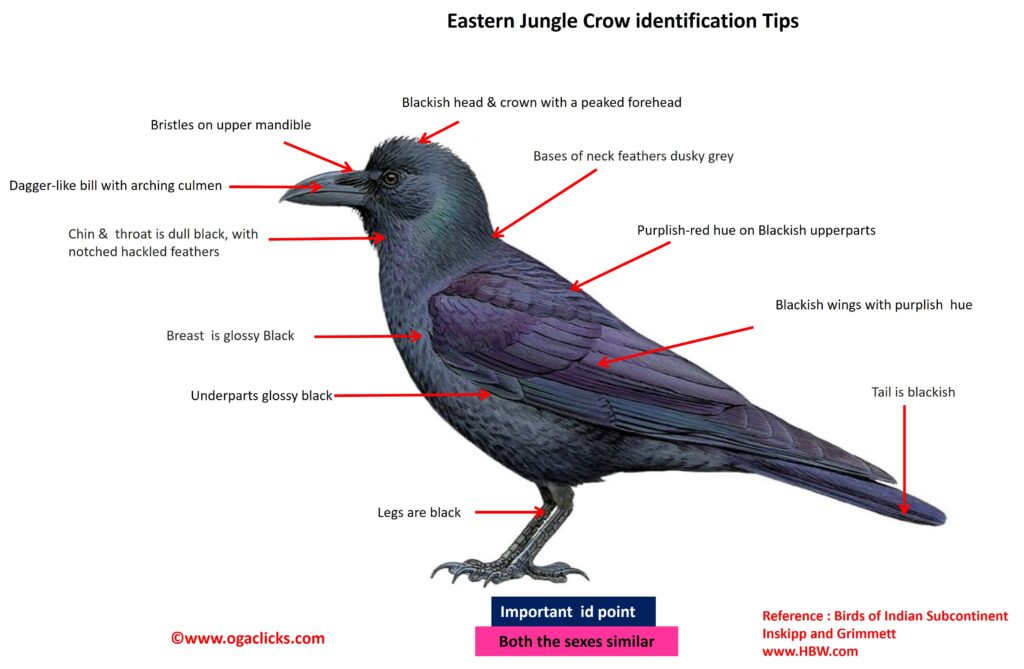
Eastern Jungle Crow Corvus macrorhynchos levaillantii
Etymology:
- Corvus : Latin Word for Raven
- Macrorhynchos : Macro – Large, Rhynchos – Billed {Large Billed}
- Levaillantii : Named after French ornithologist François Levaillant (1753–1824),
Distribution in India: Resident of North East India
Description: Size of 46-49 cm. It has a peaked forehead, plumage entirely black, head, neck and upperparts, including wing and tail, strongly glossed, upper surface of wing and central tail feathers shot with purple; underparts black with strong sheen; bases of neck feathers pale grey, throat feathers with notched hackles; iris dark brown; long bill and legs black. Both the sexes are similar, female on average smaller than male, with less arched culmen and less strongly graduated tail.
Habitat: It is found in forests and woodland of all types across its wide range. In Himalayas ranges to upper limits of tree-line about 4500 m. Found in abundance near Human settlements and domestic cattle.
Food Habits: It’s an omnivores scavenger. It hunts small mammals like rats, squirrel and also crustaceans like crab and invertebrates like centipedes, grasshoppers and locusts, moths and caterpillars, beetles , ants and termites. It eats a variety of fruits and variety of cereals. It feeds among foliage of a variety of flowering taking both nectar and petals. It is usually encountered in pairs or family parties, often feeding with other birds in fruiting trees, larger congregations at good food sources.
Breeding Habits: They breed in April-May. They have a long-term pair-bond. They are Solitary breeder. The nest is built by both sexes. The nest is a platform of twigs and sticks, with deep cup lined with soft materials such as wool and hair and placed above ground in prominent tree fork, sometimes in crown of palm. They lay a clutch of 3–6 eggs. The incubation is done by female for a period of 17–19 days .The chicks are fed by both parents and leave the nest at 3 or 4 weeks. The nests are parasitized by Common Koel.